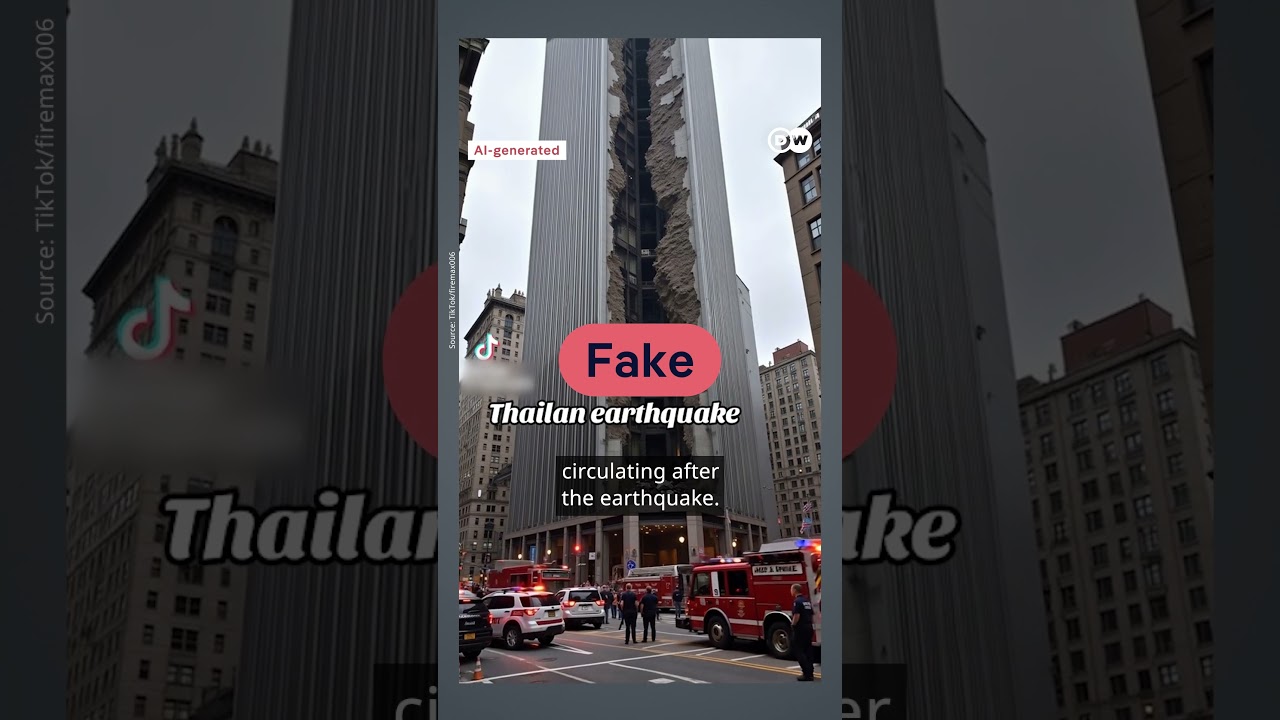The DW News video discusses the spread of misinformation following a powerful earthquake in Myanmar and Thailand, highlighting the circulation of AI-generated images and videos that falsely depict the destruction. It emphasizes the importance of verifying information during emergencies, as misleading content can detract from the real human suffering caused by such disasters.
The video from DW News addresses the spread of misinformation following a powerful earthquake that struck Myanmar and Thailand on March 28, registering a magnitude of 7.7. In the aftermath of the disaster, numerous videos claiming to depict the destruction went viral, garnering hundreds of thousands of views. The video aims to debunk these misleading clips and provide a clearer picture of the actual devastation caused by the earthquake.
One of the videos discussed in the report falsely claims to show a destroyed tower in Thailand. However, the video is revealed to be AI-generated, with telltale signs such as flickering letters on a fire engine and unrealistic depictions of the scene. The actual tower that collapsed in Bangkok looks significantly different from what is shown in the viral video, highlighting the dangers of misinformation during crises.
Another video circulating online purports to show the destruction in Myanmar but is also identified as fake. The report points out that the individuals depicted in the video appear to be moving in a manner inconsistent with a real-life disaster scenario, such as walking towards a collapsing building instead of fleeing from it. This further underscores the unreliability of the content being shared in the wake of the earthquake.
The earthquake has had a devastating impact, with experts estimating a death toll of at least 2,700 people and around 4,500 injuries. The destruction of homes and buildings, particularly in Myanmar, has been significant, and the emotional weight of such news often leads to the rapid spread of manipulated or AI-generated content online. This phenomenon can confuse the public and detract from the real human suffering occurring in the aftermath of the disaster.
In conclusion, the video emphasizes the importance of verifying information during emergencies. It serves as a reminder that in emotionally charged situations, misinformation can proliferate quickly, often for the purpose of generating clicks or sensationalizing events. Viewers are encouraged to critically assess the content they encounter online, especially in the context of natural disasters and humanitarian crises.
